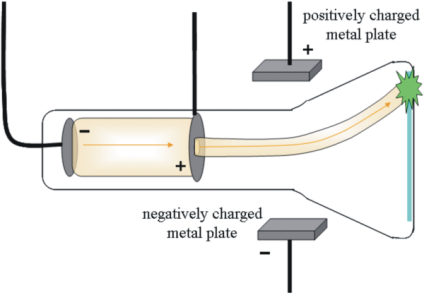
Under these circumstances, the cathode rays did bend with the application of an electric field. Thomson theorized that the traces of gas remaining in the tube were being turned into an electrical conductor by the cathode rays themselves, and managed to extract nearly all of the gas from the tube to test his hypothesis. A charged particle will curve as it moves through an electric field, but not if it is surrounded by a conducting material. Failing this, he concluded that the negative charge and the cathode rays were somehow stuck together.Īll previous attempts to bend cathode rays with an electric field had failed, so Thomson devised a new approach in a second pivotal experiment. The purpose was to determine if, by bending the rays with a magnet, Thomson could separate the charge from the rays. First, in a variation of a pivotal 1895 experiment by Jean Perrin, he built a pair of cathode ray tubes ending in a pair of metal cylinders with a slit in them, which were in turn connected to an electrometer. Three of his experiments proved especially conclusive. Thomson refined previous experiments and designed new ones in his quest to uncover the true nature of these mysterious cathode rays.

Scientists theorized that the glow was produced by some kind of ray emitted by the cathode, but it took the seminal research of a British professor in Cambridge University's Cavendish Laboratory to finally provide a solution to the puzzle. The result: the interior of the tube would glow in lovely fluorescent patterns.

They took a glass tube with wires embedded in opposite ends, administered a high voltage and pumped out most of the air. Science lecturers traveling from town to town in the mid-19th century delighted audiences with a device that could be considered the ancestor of the neon sign. October 1897: The Discovery of the Electron


 0 kommentar(er)
0 kommentar(er)
